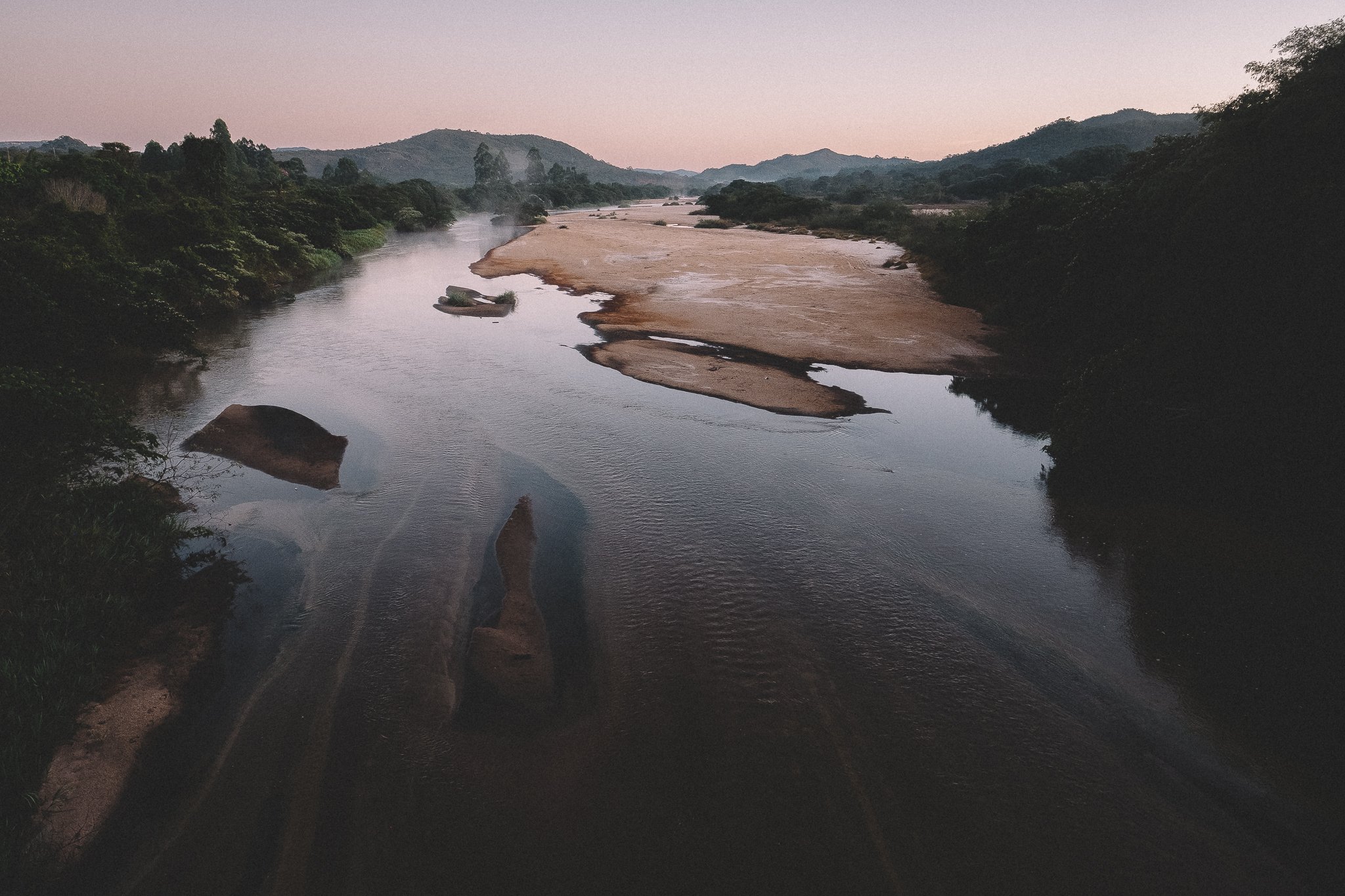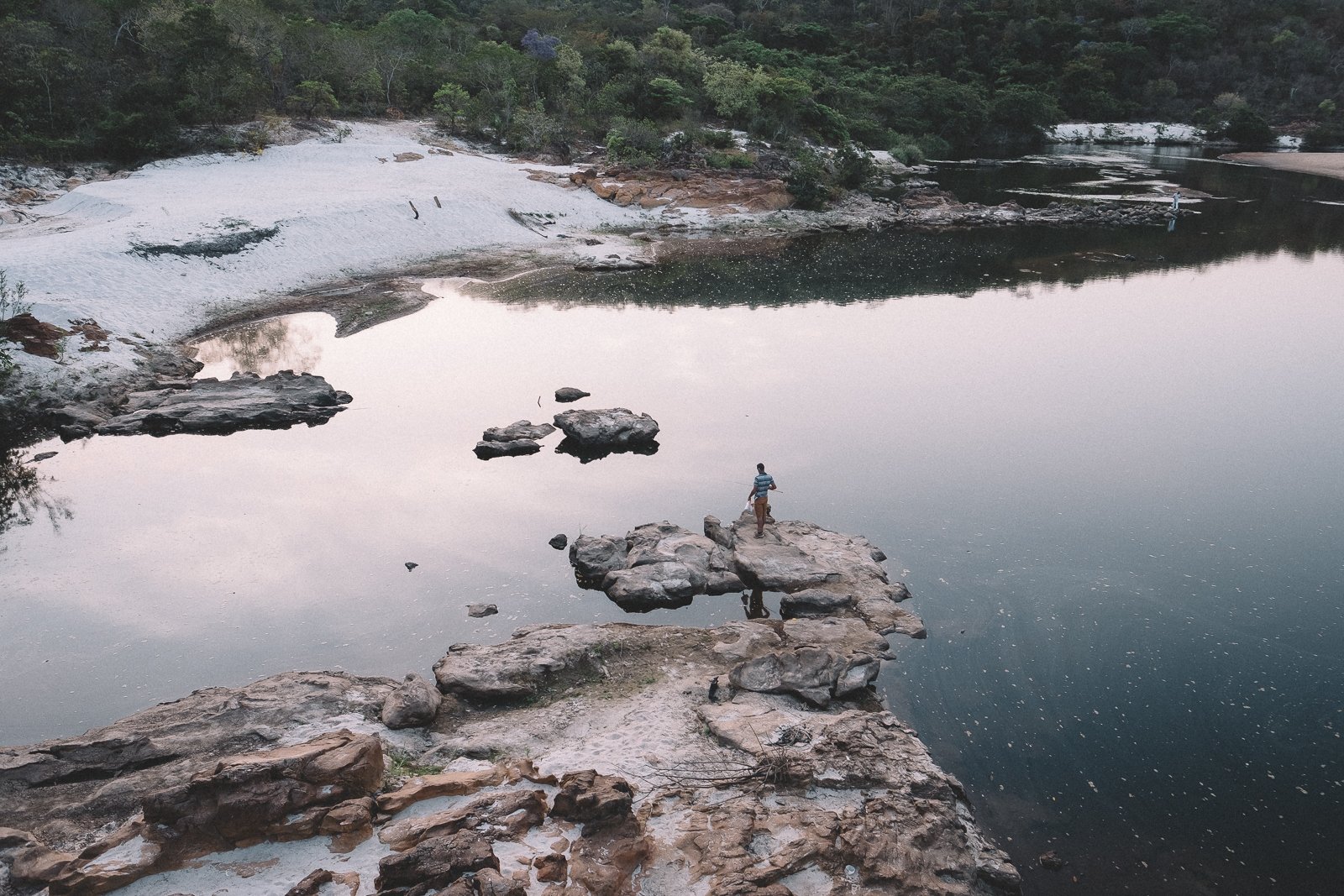
The Berço
Trekking, Riding & Overlanding in the Northern Range of the Serra do Espinhaço Merdional
The Berço: The Forgotten Corner
Secret landscapes & thunderous falls. Resilient communities, intimate homestays, and wood-fired meals over tales of flowers, hardship & glory. A slave-built highway cascading gracefully into the City of Diamonds.
We call the vast region north & northwest of Diamantina “The Berço” (The Cradle) because of its rich history, its soulful, ruminative communities, and its forgotten, exquisite wilderness areas. It is, in our minds, the forgotten corner of the Espinhaço; a place to venture deeply into the Story of Brazil, while being immersed in the majestic raw beauty of the high savannah.
The Berço makes for a profoundly exhilarating & rewarding trekking, riding, and/or overlanding circuit. It’s also a natural base for longer trips that include the Garden and/or Sertão regions.

Local Trail Guides
At a Glance
-
The Berço Circuit offers some of the Espinhaço’s most spectacular, adventurous trekking, horseback riding, and overlanding opportunities due to its considerable network of trails & backroads and little-visited, culturally enriching communities.
It stands out for its tiny, soulful quilombola communities and solemn colonial-era mining towns, as well as its gorgeous & untouristed wilderness areas, including the southern & southeastern portions of Sempre Vivas National Park (see our Garden Circuit for more information).
What it lacks in iconic scenery (a la our Serra Circuit) & specific water attractions (a la our Sertão Circuit) it makes up for with deeply immersive wilderness & cultural opportunities, as well as the chance to experience a part of Brazil that few travelers know.
It can stand alone as a pure, 10-day trekking or riding Circuit, or be integrated into longer trips with the use of overland transfers.
If you’ve done our Serra Circuit and are hoping to dive deeper into the Story of Brazil, this may be the Circuit for you.
-
Rugged mountain landscapes; Seussian (rupestrian) high savannah vegetation; soulful quilombola communities; remote colonial-era mining towns; kind, authentic residents; homemade, wood-fired comida mineira; flower-picker culture; a stately historic textile mill-turned-villa; and the most iconic trail in the Espinhaço (Caminho dos Escravos).
-
Sempre Vivas National Park, Biribiri State Park, Rio Manso Environmental Protection Area
-
Cerrado (Brazilian Savannah)
-
Our guiding season typically runs from April 1 - October 30, although we’re happy to discuss the possibility of guiding certain Bespoke itineraries outside of those months, as well.
The daily storms in the Serra do Espinhaço typically taper off in March, making April & May two of the most beautiful months to explore the region by any means: gushing waterfalls, exuberant vegetation, plentiful springs, and crossable rivers.
June & July are mild & dry, with near-perfect trail conditions: warm, sunny days and crisp, cool mountain weather in the evenings, with hardly a cloud in the sky. This is prime season for extended treks & rides.
The dry season reaches its zenith in August & September, making them wonderful months for exploring the region by foot & horseback: the savannah landscape is parched, dotted by colorful bouquets of flowers & cactus fruit, with gently-flowing waterfalls & easily crossable rivers.
The long dry season finally breaks in late September, making October & November unpredictable, but beautiful: the Cerrado is in full bloom, with daily storms creating wet & wild trail conditions and turning the landscape a thousand shades of green. These are great months for overland tours, and for trips that mix & match shorter treks with drives & rides.
The Berço: Trail Conditions
The Berço encompasses a vast area, both urban & rural, replete with all manner of trails & roads. Lightly trodden (and sometimes quite technical) miner & mule-driver trails dot the backcountry, while well-trodden footpaths and rustic dirt roads connect the region’s quilombola villages.
Of special note: an obscure, centuries-old trail that once served as a trade route between two of the Espinhaço’s predominant textile mills; and, of course, the Caminho dos Escravos, a remarkably well-maintained (and, recently, restored) slave-built stone highway that descends onto Diamantina from the Serra dos Cristais.

vale do Rio Preto (April)
Highlight: Trekking & riding the Vale do Rio Preto
Whenever folks ask us about our favorite trails in the Espinhaço (a fun, but exceedingly difficult exercise), this one comes to mind. A long, wild, and lost carousel of Tolkienesque wetlands, sandy peaks, and flowery highlands that lingers on the mind as more of a feeling of exhilaration & enchantment than an actual (National Park) trail.
Go Outside Magazine agrees, recently naming it one of the 5 most beautiful treks in Brazil (alongside world-famous treks in Mount Roraima & Chapada Diamantina).
The trail can be done in a single long, arduous day, but is best experienced as an (also arduous) 2 or even 3-day crossing, allowing us to camp & spend evenings along the river’s white sand banks.
The Vale do Rio Preto isn’t just one of our favorite trails in the Espinhaço, it’s one of our favorite places. Here’s hoping you find time to experience it during your trip.
Trail Conditions, April
Final Climb, April
Water Crossing, October
Water Crossing, April
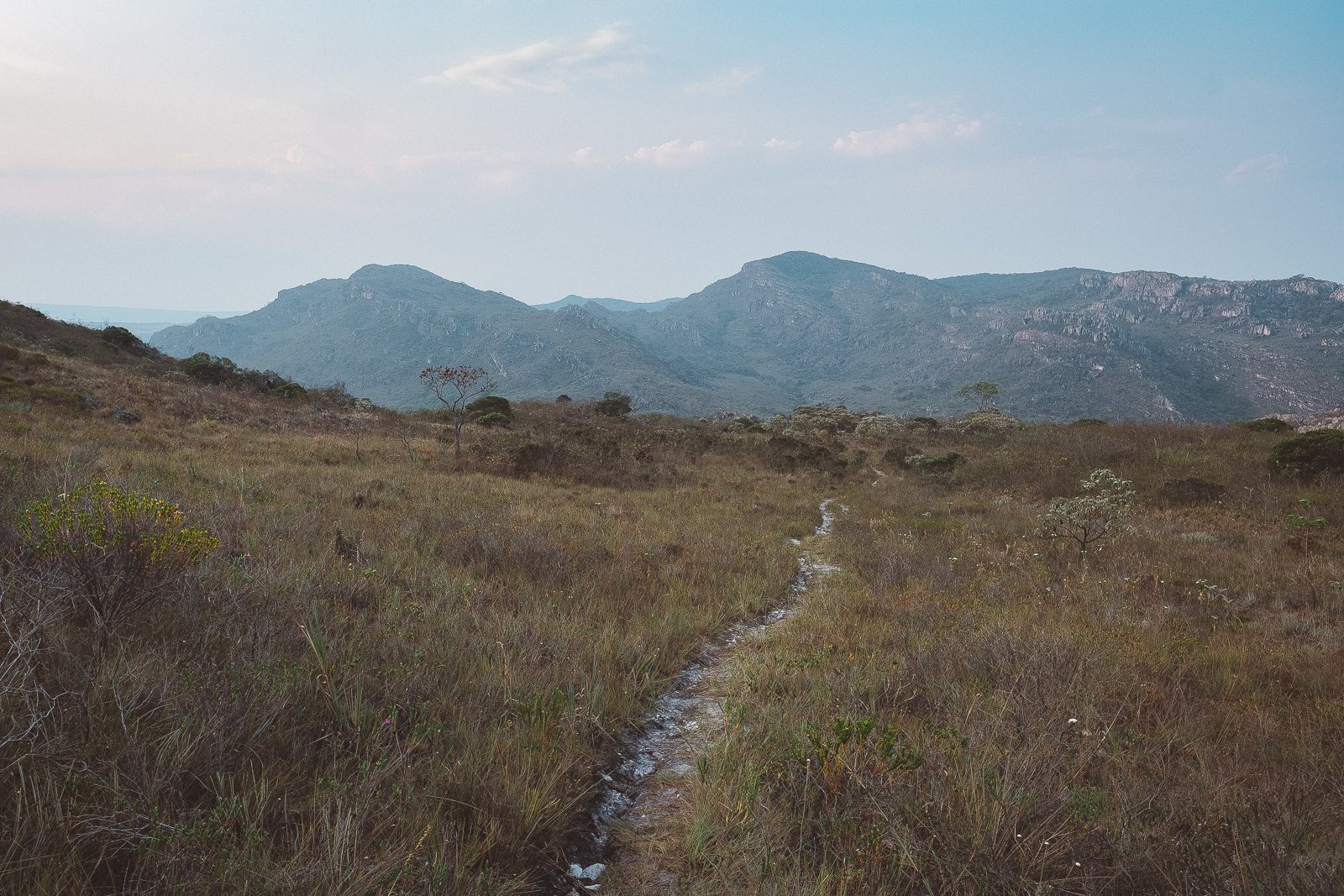
Biribiri, August
Highlight: Biribirí State Park
Located just a stone’s throw (and a wild hair) away from 50,000 lively residents, with 42,000 acres of lush cerrado, dozens of miles of well-kept trails, a pair of highly Instagrammable (and swimmable) waterfalls, and a historic textile mill-turned-gated community of the same name, it’s no wonder that Biribiri State Park is the most visited conservation unit in the Espinhaço.
While its location adjacent to Diamantina can make the Park (& its pub) a bit of a hotspot for locals during weekends & holidays, the vast majority of visitors tend to stick to the road & roadside waterfalls, meaning we often have the Park’s network of gorgeous trails to ourselves.
Historic yet modern, urban yet rural, rustic yet comfortable, and surrounded by agua, serra, and cerrado, Biribiri’s vila makes for an incredibly natural segue back to civilization (i.e. Diamantina) after any journey in the Espinhaço backcountry.
The Historic vila In October
Poço Verde in September
Serra dos Cristais in September
Finger Foods & Craft Brews, Biribiri
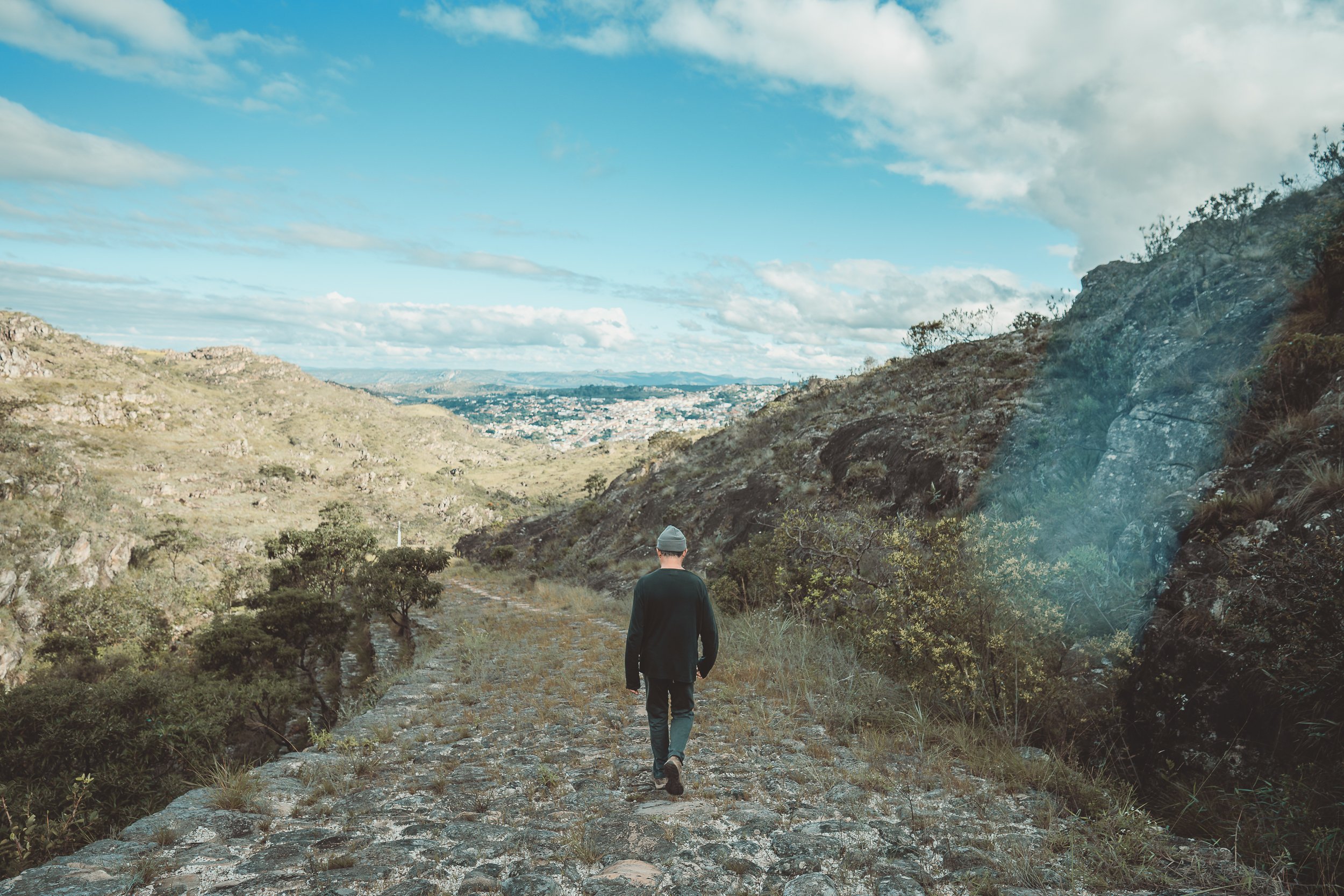
Caminho dos Escravos IN April
Highlight: Caminho dos Escravos
Many of Brazil’s colonial-era roads—and certainly the most visually arresting ones—were built by slaves, and many of them continue to be referred to as caminhos dos escravos (literally, “ways of the slaves”). In this part of the Espinhaço, however, there is really only one “Caminho dos Escravos”: an impressive 20-km stone cascade that runs north/south between Diamantina & the colonial-era mining district of Mendanha (pop. 639).
As notorious for its steep trajectory as it is for its checkered history (slave-drivers, bandits, and miners comprised most of its foot traffic), the Caminho stands as a stark reminder of what Brazil was—and how it got there—and features numerous stretches of remarkably well-preserved and restored roadway.
There are a variety of ways to integrate the Caminho into regional treks, but we most often find ourselves on it during our return trips to civilization (Diamantina) from long backcountry jaunts. It’s difficult to imagine a more profound or perfect final step for a journey in this part of the world.
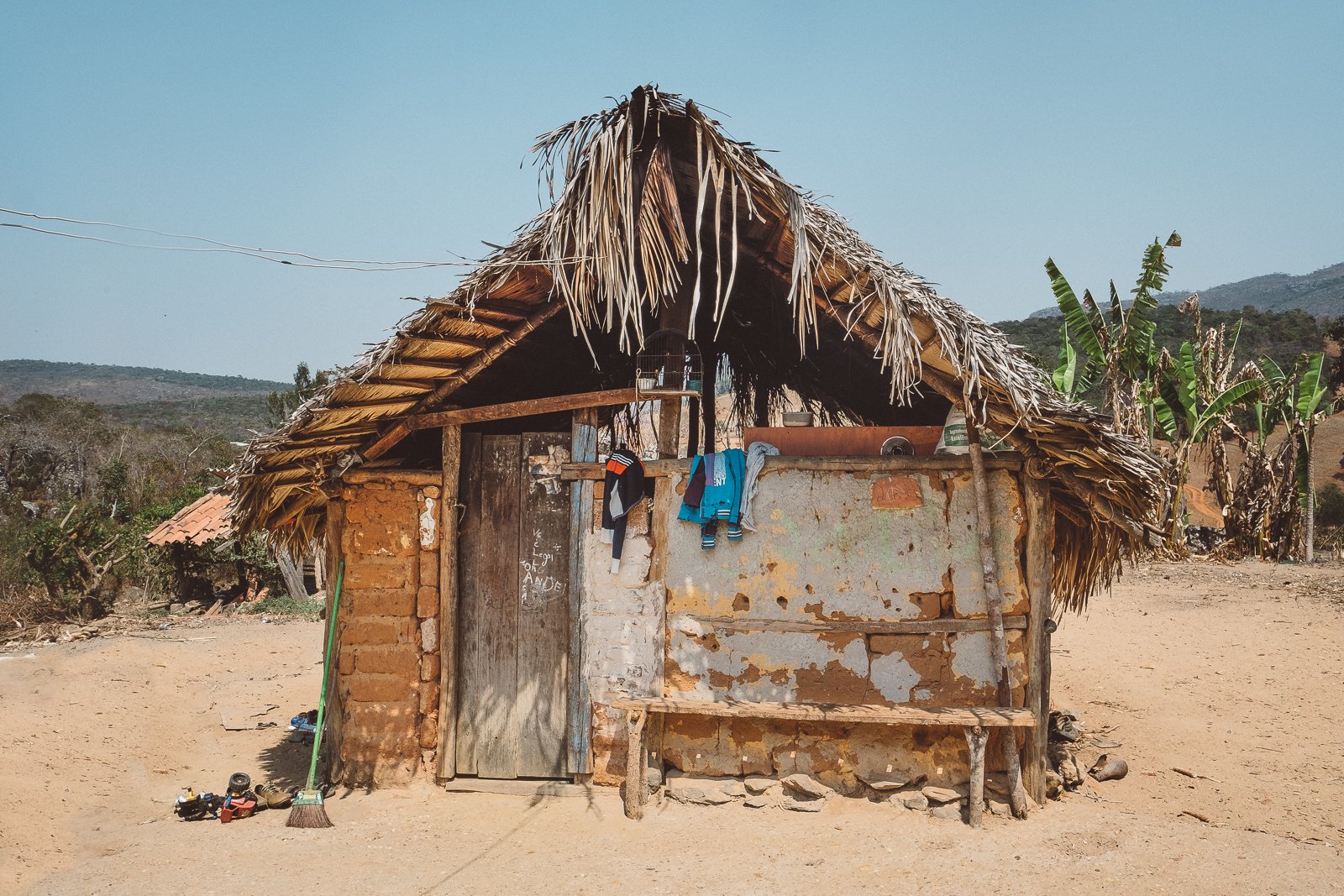
Pau-A-Pique hoUSE, Quarteis do Indaia (September)
Highlight: Quilombola Communities
The discovery of diamonds in the Serra do Espinhaço directly and dramatically changed the fortunes of not only Europe, but of Africa. Quilombos—semi-autonomous backcountry communities founded by former slaves prior to the 19th century—bear witness.
The Jequitinhona River Valley administrative district (of which Diamantina is the capital) is home to more than 80 official quilombo communities (and many more unofficial ones), dozens of which dot the Espinhaço. Bucolic, unpretentious, and near-universally backdropped by stunning scenery (not coincidentally: the early founders were often rural workers on remote ranches, or runaways who sought to move as far from civilized areas as possible), they provide an unforgettable glimpse into the diverse cultural landscape of the Espinhaço and Brazil, at large.
Several of our favorite quilombola communities (official & unofficial) are located in the Berço. Should we have time to visit them during your trip, we promise an unforgettable experience.
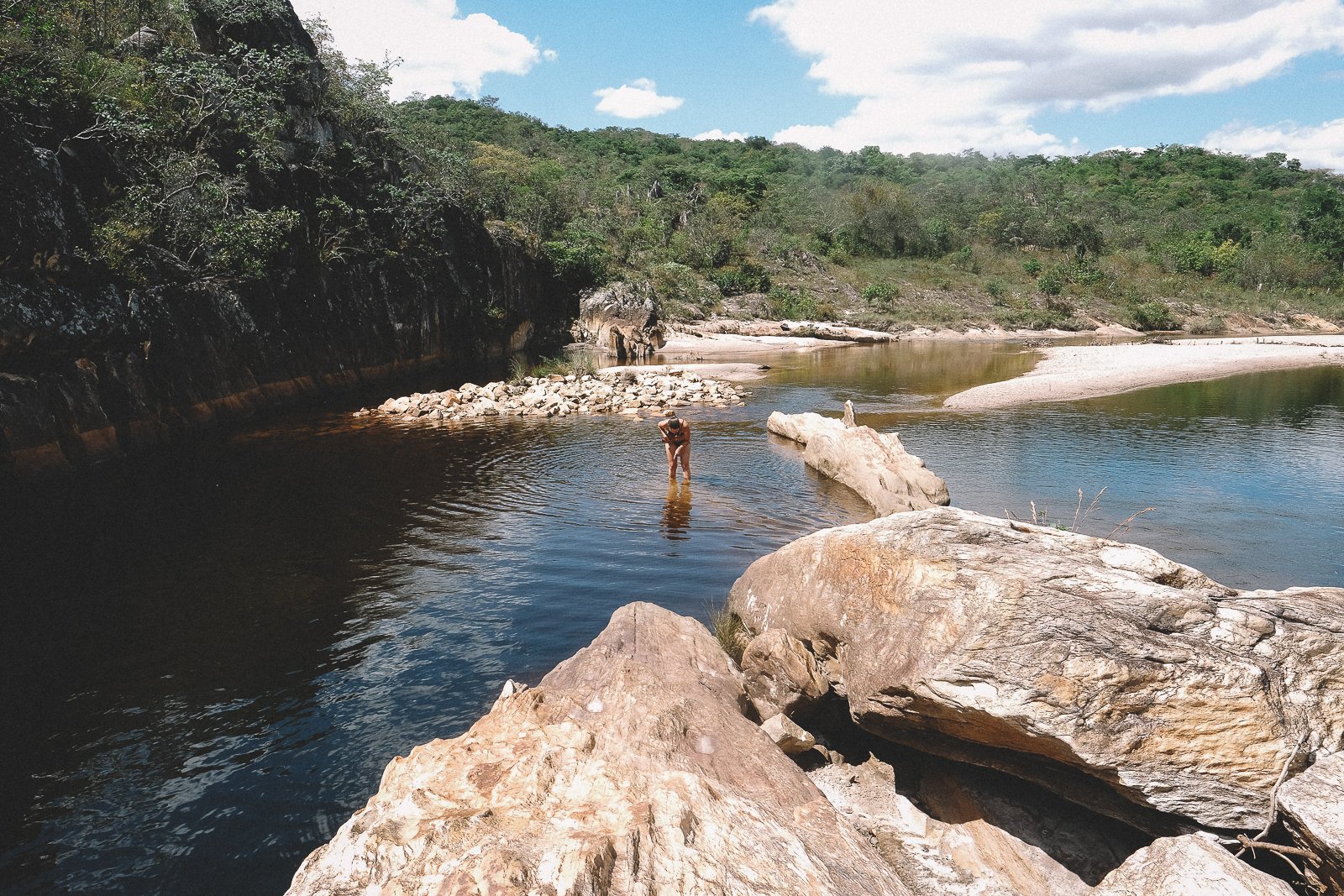
Swimming Hole (October)
The Berço: Rivers, Beaches, WAterfalls & Swimming Holes
Centuries of mining for diamonds along the waterways north of Diamantina have resulted in some of the Espinhaço’s most profoundly beautiful scenes. Exuberant Atlantic Rainforest, shimmering white sand beaches, cola-colored rivers, and pristine cascades offer plenty of reprieve during long days on the trail here…
Jequitinhonha River, July
Swimming Hole, September
Lagoon, January
Jequitinhonha River, August

CampSite, Vale do Rio Preto (April)
The BErço: WHere We Sleep
In our minds, the most enriching accommodations are paradoxical in their offerings, providing us with both a safe haven from the strange world outside our door and an intimate glimpse into that very world.
In the region north of Diamantina, specifically, we often sleep in a diverse array of accommodations, from intimate homestays in colonial-era mining towns and quilombola villages (hinterland communities settled by former slaves) to wilderness campsites along the Rio Preto; a savannah-enshrouded rock shelter; a former elementary school; and even a chic inn located in a historic textile mill.
If you’ve read this far, we think you’ll love it.














